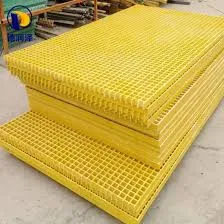
-
 Afrikaans
Afrikaans -
 Albanian
Albanian -
 Amharic
Amharic -
 Arabic
Arabic -
 Armenian
Armenian -
 Azerbaijani
Azerbaijani -
 Basque
Basque -
 Belarusian
Belarusian -
 Bengali
Bengali -
 Bosnian
Bosnian -
 Bulgarian
Bulgarian -
 Catalan
Catalan -
 Cebuano
Cebuano -
 China
China -
 China (Taiwan)
China (Taiwan) -
 Corsican
Corsican -
 Croatian
Croatian -
 Czech
Czech -
 Danish
Danish -
 Dutch
Dutch -
 English
English -
 Esperanto
Esperanto -
 Estonian
Estonian -
 Finnish
Finnish -
 French
French -
 Frisian
Frisian -
 Galician
Galician -
 Georgian
Georgian -
 German
German -
 Greek
Greek -
 Gujarati
Gujarati -
 Haitian Creole
Haitian Creole -
 hausa
hausa -
 hawaiian
hawaiian -
 Hebrew
Hebrew -
 Hindi
Hindi -
 Miao
Miao -
 Hungarian
Hungarian -
 Icelandic
Icelandic -
 igbo
igbo -
 Indonesian
Indonesian -
 irish
irish -
 Italian
Italian -
 Japanese
Japanese -
 Javanese
Javanese -
 Kannada
Kannada -
 kazakh
kazakh -
 Khmer
Khmer -
 Rwandese
Rwandese -
 Korean
Korean -
 Kurdish
Kurdish -
 Kyrgyz
Kyrgyz -
 Lao
Lao -
 Latin
Latin -
 Latvian
Latvian -
 Lithuanian
Lithuanian -
 Luxembourgish
Luxembourgish -
 Macedonian
Macedonian -
 Malgashi
Malgashi -
 Malay
Malay -
 Malayalam
Malayalam -
 Maltese
Maltese -
 Maori
Maori -
 Marathi
Marathi -
 Mongolian
Mongolian -
 Myanmar
Myanmar -
 Nepali
Nepali -
 Norwegian
Norwegian -
 Norwegian
Norwegian -
 Occitan
Occitan -
 Pashto
Pashto -
 Persian
Persian -
 Polish
Polish -
 Portuguese
Portuguese -
 Punjabi
Punjabi -
 Romanian
Romanian -
 Russian
Russian -
 Samoan
Samoan -
 Scottish Gaelic
Scottish Gaelic -
 Serbian
Serbian -
 Sesotho
Sesotho -
 Shona
Shona -
 Sindhi
Sindhi -
 Sinhala
Sinhala -
 Slovak
Slovak -
 Slovenian
Slovenian -
 Somali
Somali -
 Spanish
Spanish -
 Sundanese
Sundanese -
 Swahili
Swahili -
 Swedish
Swedish -
 Tagalog
Tagalog -
 Tajik
Tajik -
 Tamil
Tamil -
 Tatar
Tatar -
 Telugu
Telugu -
 Thai
Thai -
 Turkish
Turkish -
 Turkmen
Turkmen -
 Ukrainian
Ukrainian -
 Urdu
Urdu -
 Uighur
Uighur -
 Uzbek
Uzbek -
 Vietnamese
Vietnamese -
 Welsh
Welsh -
 Bantu
Bantu -
 Yiddish
Yiddish -
 Yoruba
Yoruba -
 Zulu
Zulu
frp composite panels
Understanding FRP Composite Panels A Revolution in Material Technology
Fiber Reinforced Polymer (FRP) composite panels are emerging as an innovative solution across various industries due to their unique properties and advantages. These panels consist of a polymer matrix reinforced with fibers, typically glass, carbon, or aramid. Their combination of lightweight structure, high strength-to-weight ratio, corrosion resistance, and adaptability makes them increasingly popular in construction, transportation, and marine applications.
What are FRP Composite Panels?
FRP composite panels are constructed using layers of fiber embedded in a polymer matrix. The fibers provide strength, while the polymer matrix binds the fibers together and provides protection against environmental factors. This combination not only enhances durability but also allows for a reduction in overall weight compared to traditional materials, such as steel or wood.
The manufacturing process involves several techniques, including hand lay-up, vacuum infusion, and automated processes like resin transfer molding (RTM). Each method has its advantages and applications depending on the required strength, surface finish, and production volume.
Advantages of FRP Composite Panels
1. Lightweight and High Strength One of the most outstanding features of FRP composite panels is their high strength-to-weight ratio. This property allows for easier handling and installation, significantly reducing transportation costs and labor efforts. The lightweight nature of these panels makes them exceptionally beneficial in applications where weight savings can lead to improved performance, such as in the aerospace and automotive industries.
2. Corrosion Resistance FRP composites are highly resistant to corrosion, making them ideal for use in environments that expose materials to moisture, chemicals, and other corrosive agents. This characteristic extends the lifespan of the panels and reduces maintenance costs, particularly in marine and industrial applications where traditional materials would quickly deteriorate.
3. Thermal and Electrical Insulation Unlike metals, FRP composite panels provide excellent thermal and electrical insulation. This property is crucial in applications where maintaining temperature control or protecting sensitive electrical components is necessary.
4. Design Flexibility FRP composites can be molded into complex shapes and customized to meet specific design requirements. This flexibility allows architects and engineers to produce aesthetically pleasing structures without compromising on strength and functionality.
frp composite panels

5. Sustainability As sustainability becomes a significant concern across various industries, the use of FRP composite panels aligns with eco-friendly practices. Many composite materials can be produced from renewable resources or recycled materials, and their longevity contributes to reduced waste.
Applications of FRP Composite Panels
The versatility of FRP composite panels makes them applicable in numerous fields
- Construction In the construction industry, FRP panels are used for architectural facades, roofing, and flooring systems. Their resistance to weathering and impact makes them suitable for both residential and commercial buildings.
- Transportation In the automotive and aerospace sectors, FRP panels contribute to the manufacture of lightweight vehicles, enhancing fuel efficiency and reducing emissions.
- Marine The marine industry benefits from the corrosion resistance of FRP panels, which are utilized in boat hulls, decks, and other structural components exposed to harsh marine environments.
- Infrastructure FRP composite materials are increasingly used in bridges, walkways, and a variety of infrastructure projects. Their ability to withstand heavy loads while resisting corrosion ensures safer and longer-lasting structures.
Conclusion
FRP composite panels represent a significant advancement in material technology, offering a combination of strength, durability, and versatility. As industries continue to search for solutions that address performance demands while considering environmental impacts, the role of FRP composites is set to expand. With ongoing research and development, the future of FRP composite panels looks promising, paving the way for innovation across multiple sectors. Whether in construction, transportation, or marine applications, FRP composite panels are poised to redefine industry standards and contribute to a more sustainable future.









